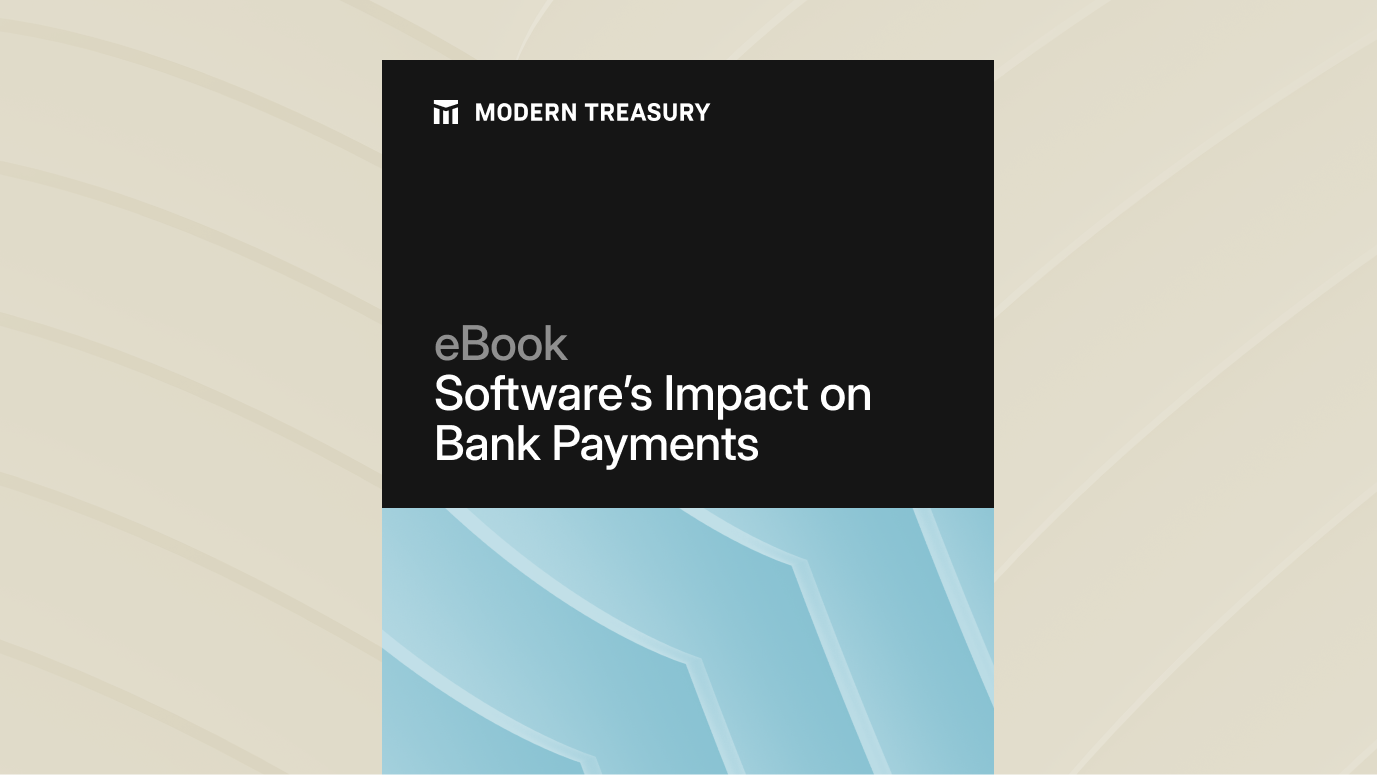Join us at Transfer 2025 to hear how industry leaders are building payments infrastructure for a real-time world.Register Today →
Three Key Learnings from the Alternative Financing Panel
On Thursday, along with Rutter, we hosted a discussion to learn about alternatives financing. Here are three key learnings from our panel.

On Thursday, along with Rutter, we hosted a discussion to learn about alternatives financing, particularly in light of today’s bear market. Alternative financing refers to financing opportunities outside of bank and equity raises. Two common examples of alternative financing are revenue-based financing and invoice factoring.
Our panel featured product managers from Capchase, Rutter, and Modern Treasury, all of whom work together to power alternative financing:
- Capchase: Underwrites and disburses loans to SaaS companies to turn recurring revenue into flexible growth financing.
- Rutter: Provides APIs for lenders to extract eCommerce and accounting data to provide a holistic view of the customer’s business health.
- Modern Treasury: Provides an operating system for money movement to ensure timely payments disbursement, transaction visibility, reconciliation, and compliance for lending programs.
Capchase uses Rutter to extract eCommerce data from their customers, and uses Modern Treasury to manage payment operations.
This journal will take a close look at some of the highlights and key learnings from the discussion.
1. Businesses have several options for short-term financing
Businesses have a variety of funding sources available to them, with different tradeoffs around speed, cost, and investor security. Some of the main options are:
- Bank funding. Many banks offer small business loans through their own balance sheets, SBA programs, or loan brokers like Lendio. While this has been a historically prominent source of funding for small businesses, businesses are often faced with personal guarantees, collateral requirements, higher interest rates, lower approval rates, and longer approval times, often taking several weeks.
- Embedded lending. Businesses that operate on marketplaces and vertical SaaS products can often receive capital from those sources, as they already see transaction data from usage of their software products. For example, Modern Treasury customer Parafin offers loans for health and wellness studios operating on the MindBody platform.
- Revenue-based financing. Companies like Capchase and Pipe, both Modern Treasury customers, underwrite based off of alternative data sources included future revenue streams.
Revenue-based financing offers numerous benefits for customers:
- Faster underwriting: The goal for many of these new lenders is to underwrite and provide lending decisions within 24 hours. We are seeing a consumerization of the B2B lending experience, where underwriting speed is a competitive advantage for lenders.
- Continuous underwriting: Businesses can be underwritten in a real-time and continuous basis for access to future financing. Rather than going through a long process for every loan application, businesses can see near-instant offers for additional capital with revenue-based financing lenders.
- Frequent disbursement: Businesses can draw on capital incrementally, rather than in a lump sum, to minimize borrowing costs and maintain healthy working capital dynamics.
2. Modern lenders use a variety of data sources to underwrite loans
Traditional lenders typically require businesses to provide business plans, financial projections, and bank statements. This is often an iterative process involving several rounds of negotiation and in-person meetings.
With the help of APIs like Rutter, modern lenders can quickly extract data from more data sources than ever before, including:
- Commerce platforms, such as Shopify, WooCommerce, and BigCommerce.
- Accounting software, like QuickBooks, Xero, and NetSuite.
- Alternative data, including marketing analytics, payroll, inventory data, and more.
Lenders look across revenue and cost data to analyze figures including LTV/CAC, gross margins, CAC payback time, net revenue retention, and sales cycle length to offer lending terms to their customers.
3. Lenders can differentiate on underwriting logic while outsourcing data and payment operations
Businesses are looking for the lowest rates in the fastest time, and modern technology can enable a delightful experience for lending customers. To enable this modernized lending experience, the most important elements of a lending business’s technology stack are:
- Underwriting: Lenders need to find as many relevant data sources as quickly as they can to complete the underwriting process.
- Fraud: Lenders must comply with regulatory requirements such as Know Your Customer (KYC) and Know Your Business (KYB), as well as risk management requirements to ensure longevity of their businesses.
- Payment operations disbursement: Once loans are underwritten, lenders need to disburse the funds to the businesses as quickly as possible so businesses can fund working capital needs.
To win in the alternative financing market, lenders should focus on differentiated methods of acquiring customers, risk management, interest rates, and seamless user experience. Companies like Rutter and Modern Treasury help take care of the other parts: fast and robust access to alternative data, regulatory compliance, and smooth payment operations.
Reflection
We’d again like to thank our co-host, Rutter, as well as our mutual customer, Capchase, for joining us on our panel. We also appreciate all the attendees for their thoughtful questions and engagement.
If you have questions about payment operations or want to learn more about how Modern Treasury can help you build a lending service, reach out to us.
Try Modern Treasury
See how smooth payment operations can be.







